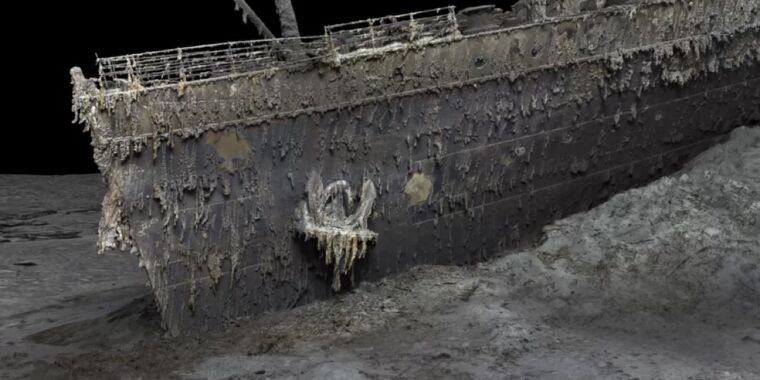
“Digital twins” are making national headline news with the first-ever full-size digital scan of the Titanic wreckage. It’s exciting! Or is it? This ambitious deep water undertaking has yielded more than 16 terabytes of data, 715,000 still images, and a high-resolution video, all in absolutely stunning sub-millimeter detail. And while the technological advancements are impressive, it’s also sparked some debate among those of us in the industry: is this 3D model of the Titanic technically a “digital twin”? The answer is complicated.
What is a digital twin?
Conceptually, the idea of digital twins has been around since the 1960s when NASA created “living models” of the Apollo mission. However, the term “digital twin” wasn’t introduced until 2010 by NASA’s John Vickers. Today, while the adoption of digital twins is common, the terminology has been slow to make its way into the everyday vernacular. Adding to the confusion, there are strong opinions in the industry about the positive benefits of digital twins, but there is not always agreement on a single definition.
At its core, a digital twin is a virtual representation of a real-world physical object, process, or system. It uses data from its physical counterpart to mirror real-time conditions and behaviors. Digital twins are an invaluable tool for managing existing infrastructure, planning for future developments, or viewing data throughout all phases of a project’s life cycle.
What is the difference between a Digital Twin and Digital Model?
On the other hand, a digital 3D model is a static representation of a physical object or environment primarily used for visualization, design, and animation purposes. It typically captures a moment in time of its physical counterpart, including the geometry, appearance, and spatial relationships of the object or environment. It does not possess the dynamic, real-time capabilities of a digital twin.
A digital twin provides real-time synchronization, analysis, and data capabilities that a static 3D model does not.
Is the 3D scan of the Titanic a digital twin or a model?
Due to the deep sea conditions and the highly limited field of vision surrounding the shipwreck, many details surrounding the sinking of the R.M.S. Titanic have remained a mystery. Using scans over a six-week expedition last summer, Magellan Ltd, a deep-sea mapping company, and Atlantic Productions (which is making a documentary about the project), were able to create an incredibly detailed, photorealistic model that mapped “every millimeter” of the wreckage. The exact condition of the ship and the 3-mile debris site is mapped at a level of detail never before seen, literally.
The scanned images are rendered in such high-definition that you can see personal artifacts like individual shoes, watches, unopened bottles of champagne – even the serial number on a propeller. There are plans to use AI to match the captured artifact data with their previous owners for archival and personal stories of those who traveled aboard the ship. Someday, perhaps, it might even be possible to walk through the ship with the aid of virtual reality.
The scan is also leading to new discoveries about the disaster. For example, researchers were able to observe that one of the Titanic’s lifeboats wasn’t deployed because it was “blocked by a jammed metal piece.”
Final thoughts
Is the model spectacularly cool? Yes. Is it a digital twin? In our opinion, no. The static model represents a one-time visual snapshot of the wreckage in its current state. There is no synchronization with ongoing data capture or monitoring of the ship deterioration (or lifecycle).
Does this 3D model have the potential to be a digital twin? Perhaps! Some reports have mentioned possible plans to track the shipwreck debris movement across the ocean floor using the model for geolocational analysis and tracking. If the artifact data is populated with historical information attributed to both personal items and ship assets, the information would have a dynamic asset related to the lifecycle of those assets and deterioration rates.
In the ever-changing technological landscape, we’re seeing new applications for digital twins nearly every day across industries. The insights and historical significance of the Titanic scans are undoubtedly important. The technological advancements that made the deep sea scans possible are a game-changer for future industry applications. And the buzz surrounding the footage has created a national conversation about digital twins, which is a priceless opportunity to advance the digital twin landscape.
What are your thoughts? Join the conversation on LinkedIn.
Want to take a deeper dive? Watch this exclusive footage of the Titanic model from BBC News.




